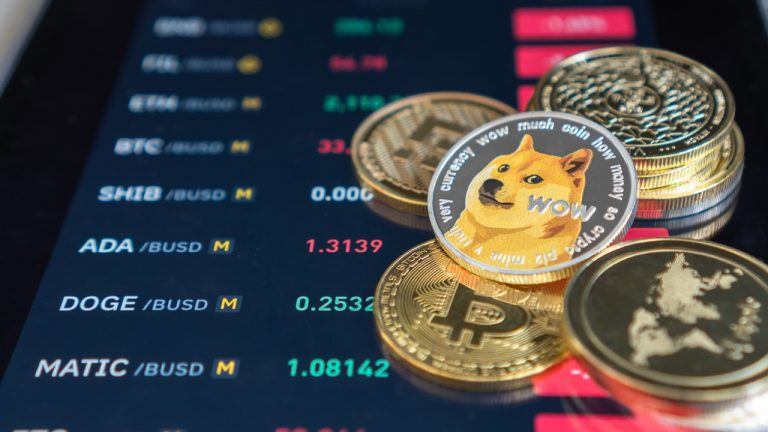
Finance Redefined: The shadow DeFi conference in Miami! June 2-9

Talking with big brains about DeFi, regulation, CBDCs, and institutional adoption at the Bitcoin conference in Miami!
Last week, I made the mistake of being just about the only DeFi denizen who actually went to the Bitcoin 2021 event in Miami.
While I managed to catch up with a handful of builders and big brains in the convention center, my time would have been better spent tracking down degens at the various satellite events, yacht parties, and nightclub meetups — the “shadow conference” for DeFi taking place while boomercoin maximalists talked over the same points they’ve been parroting for the better part of a decade.
What little time I did get to spend with DeFi folks was immensely rewarding, however. I came away from talks with representatives from SushiSwap, Yearn Finance, Balancer, Polygon, the Digital Dollar Project, and FTX, among others, with a couple useful kernels of info on how decentralized finance may evolve in the latter half of the year. While full interviews will be coming out next week, in the meantime here’s a synopsis of the best of what I gleaned:
Risk and regulation:
While it feels like institutional adoption has been just out over the horizon for years now, there’s growing reason to believe that big investment bank money may finally be splashing around in DeFi pools before too long.
As things stand, everyone I talked to is unanimous about firms showing genuine interest in finding ways to get involved, but not everyone is sure what exactly that looks like or how to finagle it from a regulatory and custodial standpoint.
Decabillionaire Sam Bankman-Fried of FTX and Alameda Research (who notably had no security guards, despite Bitcoiners worth orders of magnitude less like Saylor walking around with a mobile rugby scrum — or, wait, maybe Sam had very good security guards in that I never noticed them?) described the dynamic as similar to a college couple, with one party “waiting” for the other.

“We’re gonna be ready, we’re gonna be feeling it out, lots of conversations, lots of open talking about our feelings and desires,” he joked.
From his perspective, FTX is ready to flip an “on” switch and provide a gateway to whatever services institutions want. However, the work sounds more like an exercise in empathy than business: it involves long conversations about what the institutions want, exactly — more yield on dollars, exposure and custody, some kind of on-ramp to satisfy client demands — but when clients say “we want to do the crypto thing,” what do they mean and what’s actually possible? Everyone has questions. Everyone’s in their feelings. For now, progress largely looks like a firm getting on an exchange and trading some crypto.
DeFi folks expressed similar sentiments. Pseudonymous Yearn Finance security specialist “Doggy B” framed the barriers to involvement as one of singular, personal choice: whether or not an institution gets involved depends on the risk tolerance of the head lawyer at the particular institution — a state of affairs that feels absurd given the possible sums of money at play.
Me, at the conf: https://t.co/53sboRxrs6 pic.twitter.com/EQS2CN6FjE
— Dog Speaker Banknote (@fubuloubu) June 6, 2021
The problem here is obvious: the regulatory framework at the moment is a whole lot of sound and fury signifying nothing. Elizabeth Warren said some asinine things the other day, and somebody at one of the acronym agencies Googled DeFi and got upset about it. It’s the kind of thing that could — and is maybe specifically designed to — scare off the lawyers willing to take the leap.
It’s good to remember that the regulatory winds are ever-changing, despite how stormy they seem at the moment. Any real legislation would be subject to rounds of hearings and testimony, and barring some sort of drastic executive order, more level heads like Chris Giancarlo would get a chance to weigh in.
Heading into my interview with the former CFTC chairman, I was thinking of it as sitting down with the enemy. Instead of a straight-laced regulator obsessed with the rules, however, my impression of Giancarlo was that he’s tremendously agile and creative with his thinking.
He framed crypto regulation in terms of a broader legislative trend that’s been playing out over the last 30 years: lawmakers trying to keep up with the Internet.

“The big overview is that the Internet is a multigenerational evolution. It started with information, decentralized information […] and it’s now set its sights on finance. Don Tapscott talks about the Internet of Value, and the Internet of Value has many elements, but two of them are stablecoins and blockchain-based [currencies], and DeFi, when it comes to financial institutions.”
Where the battle over decentralized information came with built-in protections for the masses — because of first amendment rights, there is no “ministry of information,” as Giancarlo puts it — the battle over decentralized finance will be tougher, as there are dozens and dozens of regulatory bodies to grapple with.
However, he framed digital currencies as “inevitable” — a technology will progress and eventually prevail even in spite of what may eventually be antagonistic regulation.
“You can’t stop the march of technology in time, and if you do, you will become a backwater.”
I’m happy he’s leading the research into a U.S. CBDC, and find his framing useful when trying to evaluate these short-term shouts and murmurs.
VCs keep spending:
Here’s an under-reported quality of this bear market that makes me wonder if all the talk about supercycles might be on point: even with a 50% pullback across the board, VCs are still willing to spend big money on quality projects.
In 2018-19, the money simply disappeared. I’ve heard stories about eight-figure raises agreed on in December that flopped in January — perhaps because the funds themselves flopped. Dozens, if not hundreds, of companies went under, and where a whitepaper could have once brought in millions, suddenly a full product with real users couldn’t catch a bid.

In Miami, however, the checkbooks were out. I spoke with Jack Lipstone and David Lucid of Rari Capital, as well as “Tytan Inc.” of the forthcoming NFTY Labs on the current capital conditions, and both expressed having to fend off interest more than try to gin it up.
What stands out is not just that the money is sticking around, but that both the funds and the projects they’re investing in appear to be more mature as well. Rari at one point sat at $110 million in total value locked, and NFTY Labs has a working product — slick-sounding NFTs that allow for subscriptions and gated community access. The funds, meanwhile, are reportedly increasingly focused on the future — dynamic and utility NFTs, and extremely bright teens at Rari, both bets on the future.

Don’t know if it means we’re in for a bounce back anytime soon, but builders are continuing to build and funds are willing to support them this time around. In terms of fundamentals, DeFi is healthier than ever.
Go to Source
Author: Andrew Thurman









